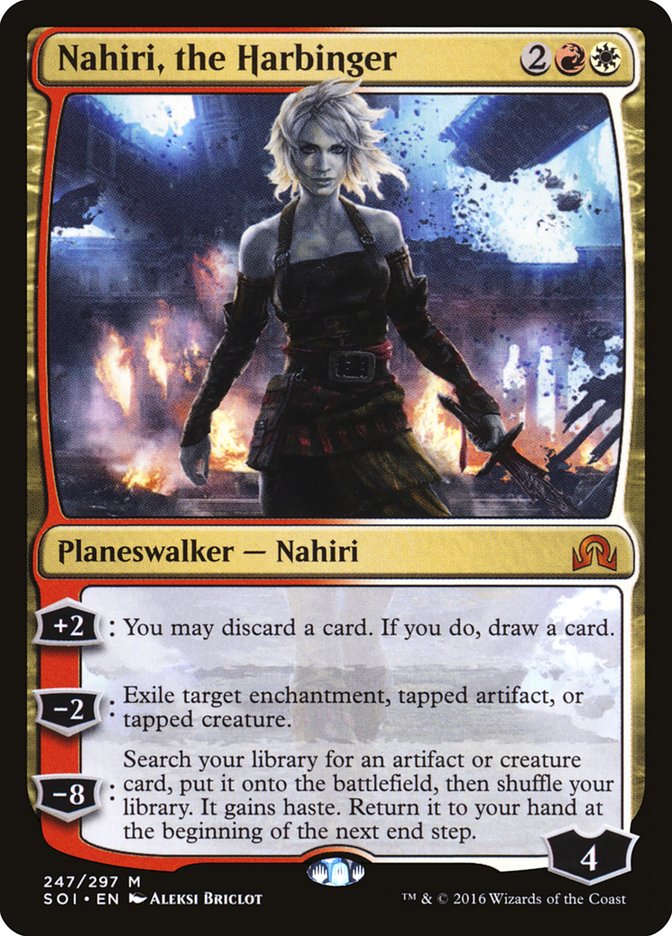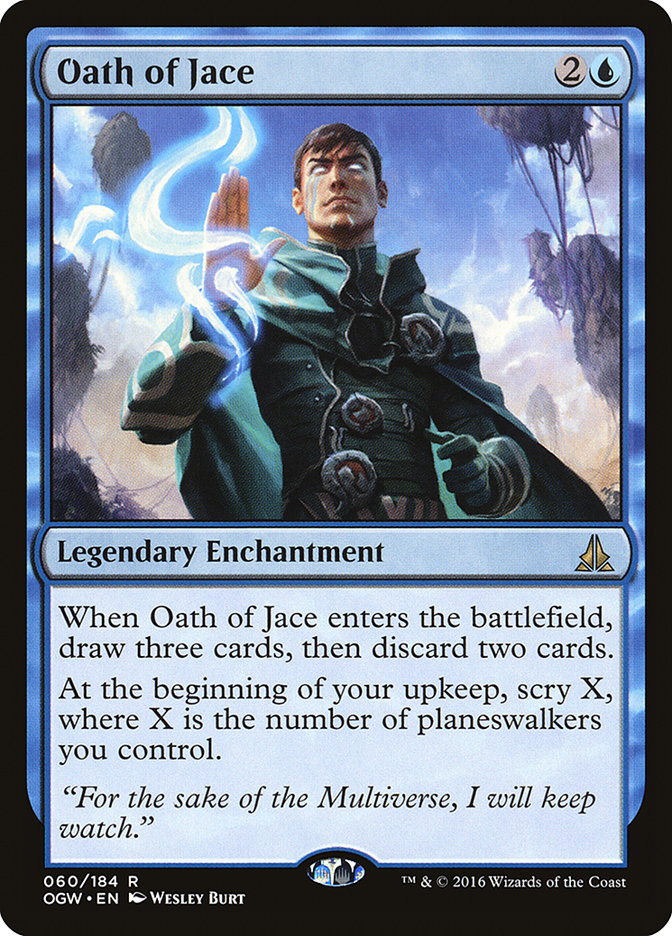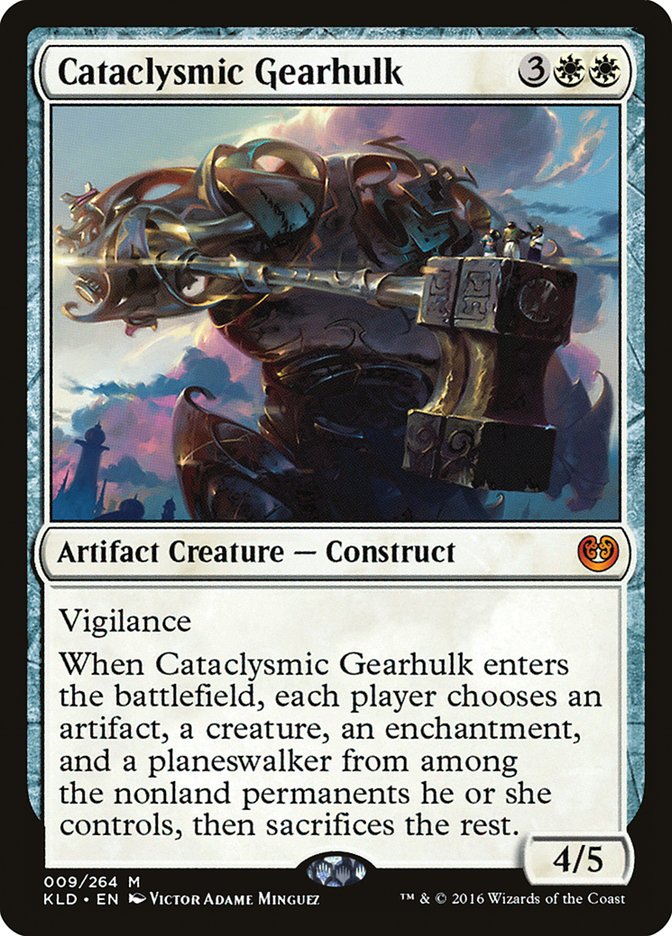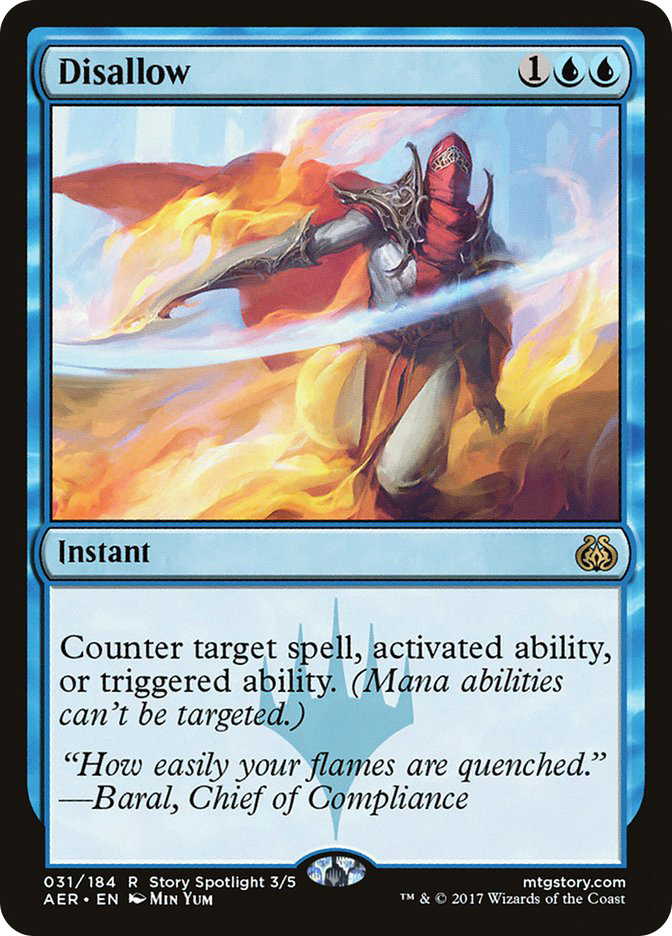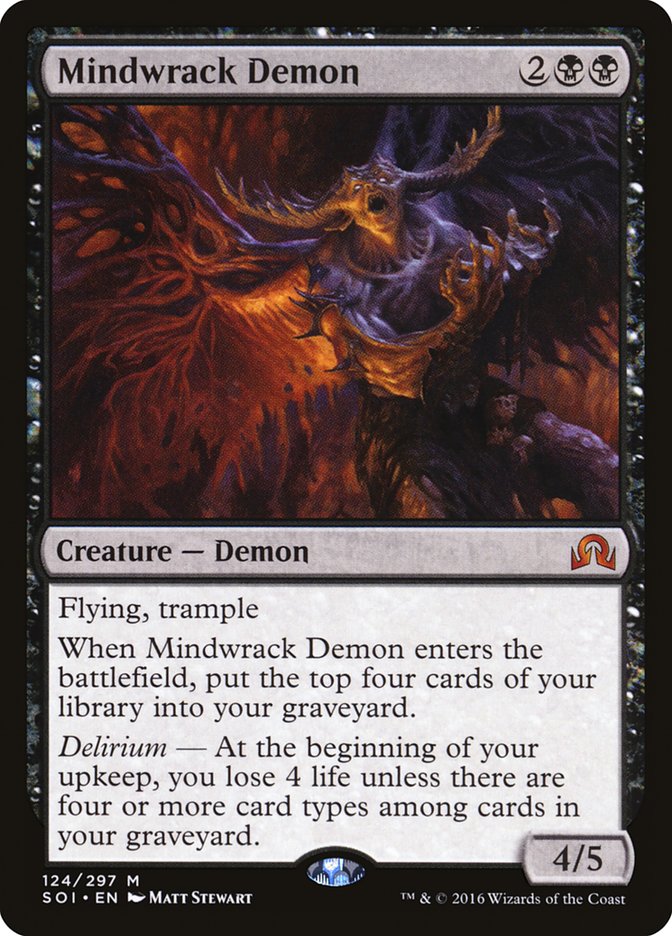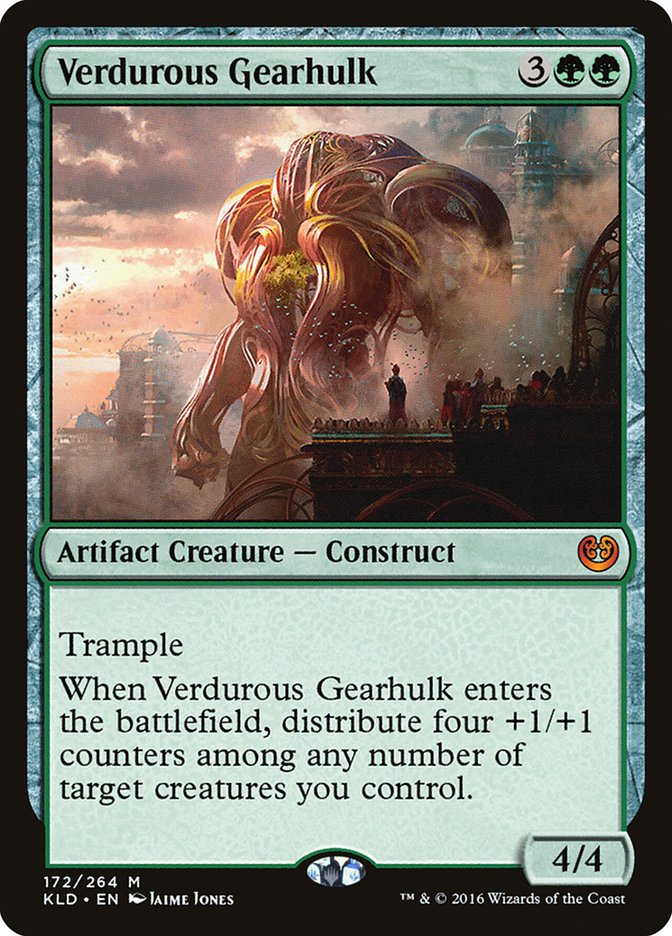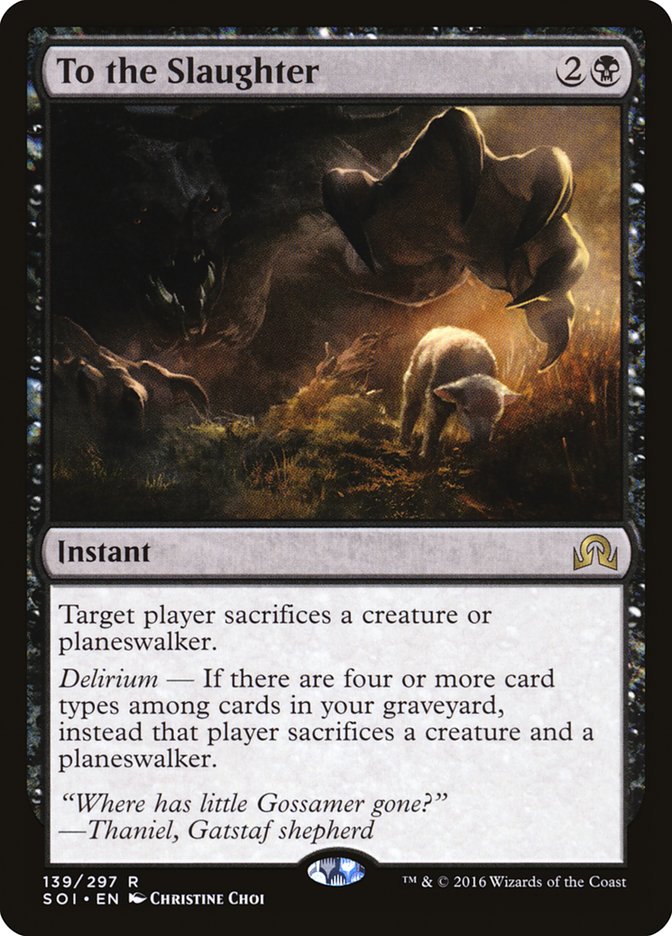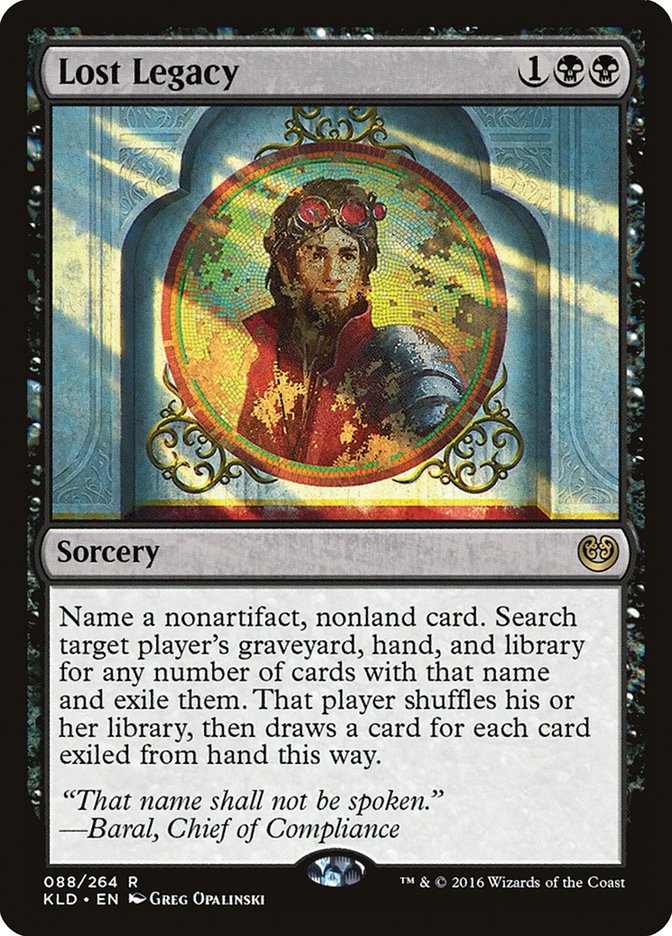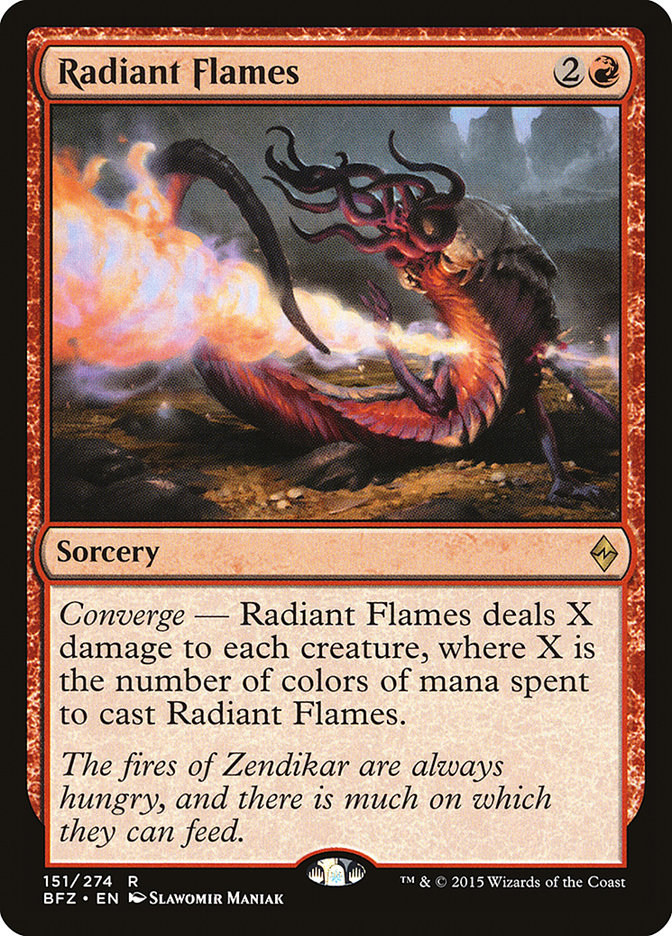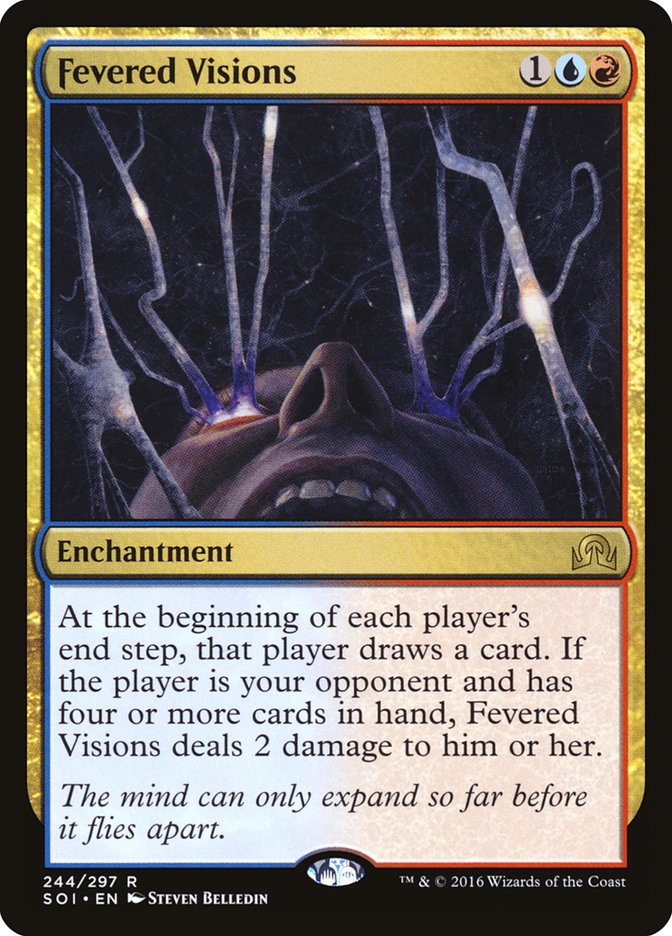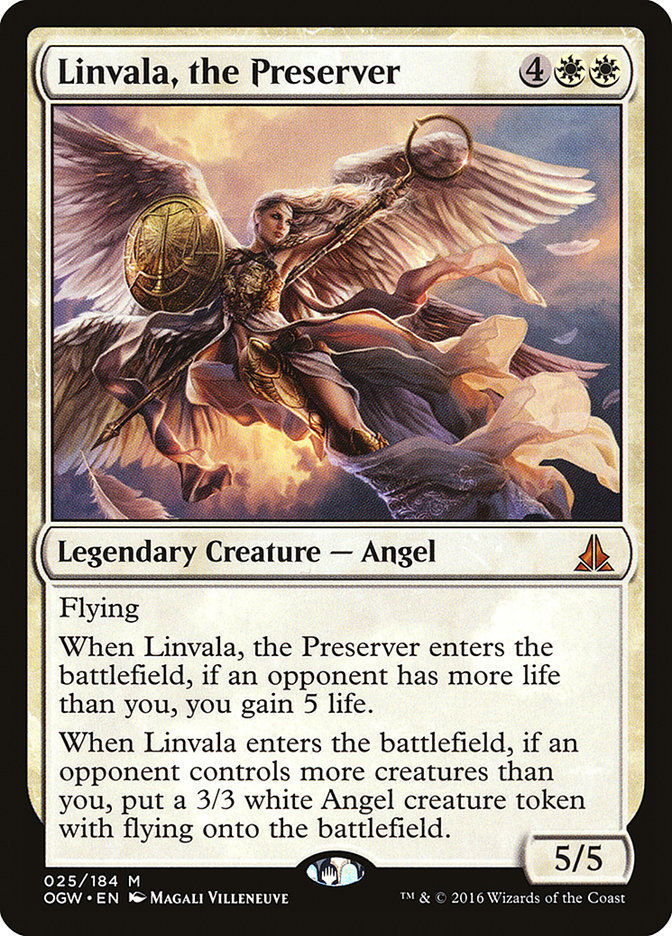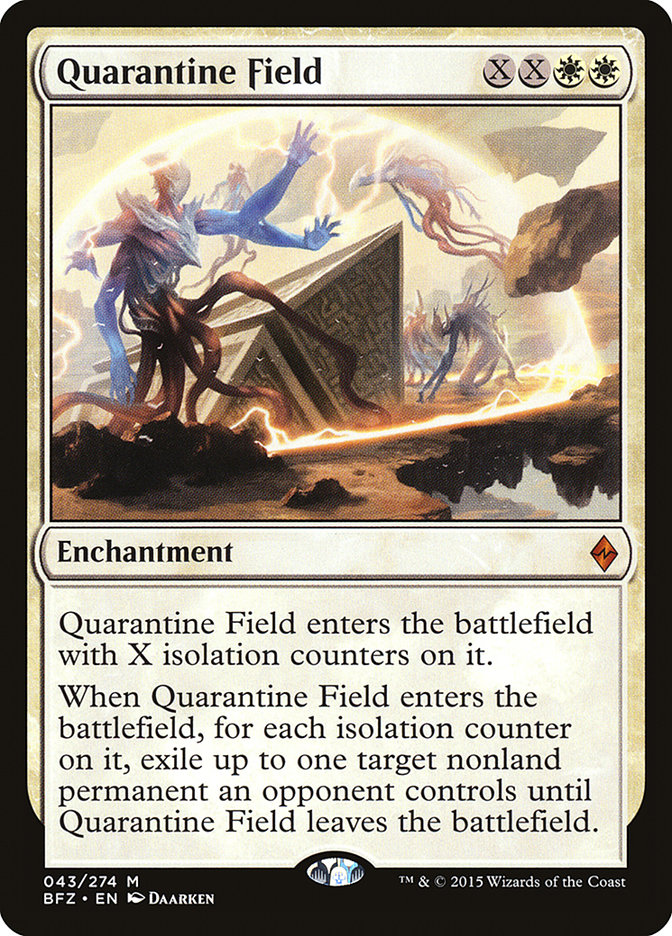The first weekend of Aether Revolt Standard is in the books and #SCGCOLdidn’t disappoint by displaying a new Standard format that is just beginning to be explored. I ended up playing Jeskai Saheeli, a control deck built around the two-card combo that I’m sure you know about by now, Saheeli Rai and Felidar Guardian.
Creatures (5)
Planeswalkers (7)
Lands (26)
Spells (22)

Nothing too surprising about the decklist, especially if you’d read my article Aether Revolt Standard Decks, where I labeled this deck as Public Enemy Number One of the new format:
Creatures (9)
Planeswalkers (4)
Lands (26)
Spells (21)
- 2 Shock
- 2 Negate
- 1 Dispel
- 4 Anticipate
- 2 Stasis Snare
- 4 Harnessed Lightning
- 1 Fumigate
- 4 Glimmer of Genius
- 1 Baral's Expertise
Sideboard

In testing the deck felt too good not to play, even though I wasn’t proud of it.
I personally don’t believe the combo adds anything positive to the gameplay experience of Standard, but I’m not here to worry about that. I’m here to put together a deck that would give me a strong chance to win the tournament, and Jeskai Saheeli was my weapon of choice for #SCGCOL. Anyway, let’s talk about the couple of small changes I made from that original list above.
First off, I kept the manabase the same from my test deck, and while it wasn’t perfect, I was always satisfied with it in testing. Perfect three-color manabases are definitely hard to come by on the first week of a format, but with eighteen blue sources, seventeen white sources, and seventeen red sources, I could usually cast all of my spells.
I chose to play Prairie Stream over Port Town because I wanted those lands to enter the battlefield untapped in the late-game when I was setting up a turn to be able to combo off with one or more counterspells as protection, and with eight Kaladesh fastlands, I had plenty of lands I wanted to play on turns 2 and 3. I was also happy with only two Wandering Fumarole, because even though they are great against control decks, there isn’t time to activate them in the mirror or against aggro.
The biggest change to the maindeck was taking out the Spell Quellers and basically replacing them with Nahiri, the Harbinger. In theory, Spell Queller was going to be a solid card against an open field that would fill a variety of roles depending on the matchup, but in practice it was a three-mana counterspell that an opponent could answer during any future turn with a removal spell. Having the 2/3 flying body wasn’t relevant very often because the chip damage it could cause wasn’t enough to win games, and using Spell Queller as a profitable blocker isn’t reliable, to say the least.
Nahiri, the Harbinger, on the other hand, was that perfect role-player that was good against every deck. Nahiri played the role of a must-answer threat against midrange and control decks while still being a removal spell against aggro decks or tough-to-deal-with permanents such as Vehicles and enchantments. I knew some people were going to play Authority of the Consuls in their maindecks to make sure they didn’t lose to the combo, but I was going to beat them anyway. Nahiri also gave me a way to be able to tutor up either Torrential Gearhulk or Felidar Guardian, depending on the situation, which made up for me playing fewer copies of the two expensive creatures.
The other maindeck changes were adding two copies of Radiant Flames over the last Spell Queller and the Baral’s Expertise in anticipation of various aggro decks being popular, which is common among Week One tournaments, and replacing a Glimmer of Genius with an Oath of Jace in order to improve the utility of Felidar Guardian.
The sideboard overall was pretty decent, which is not always the case when trying to prepare for a wide-open Week One field. In theory the Cataclysmic Gearhulk was a card that could help against both G/W Tokens, with their ability to go wide with creatures and have multiple planeswalkers on the battlefield, and against artifact-heavy strategies such as Tezzeret the Schemer or Metalwork Colossus decks. It was the last addition to the deck after the second Radiant Flames was moved to the maindeck, which cleared up a slot. I only sideboarded it in a couple times, never drew it, and wouldn’t recommend using a slot for it at #SCGRICH.
I built my version of Jeskai Saheeli to have plenty of removal to be able to beat aggressive decks, which is a popular Week One strategy. Unlike most everyone else playing the deck, I had zero copies of Disallow, which I just think is a slightly better Cancel in the deck. Throughout the tournament I probably had around twenty to 30 Disallows cast against me, and all but one time it was just Cancel, with the other time stopping a planeswalker activation. I was able to win multiple counter wars over the combo throughout the tournament because my opponents were playing a three-mana counterspell, while I had Negates and Dispels which cost less.
There’s a real cost to not playing Disallow, though, which was that I didn’t have a way to counter creatures in my 75. It was a cost I was willing to pay because of the amount of removal I had and Nahiri, the Harbinger in my maindeck. The biggest problem with this was Torrential Gearhulk, which was almost always good for my opponent when my Torrential Gearhulks were countered at times. At the end of the day, though, you can’t have everything in your deck, and I was satisfied with the exclusion of Disallow.
The Aftermath of Week One
#SCGCOL has started to establish a metagame. You will definitely see the successful decks from last weekend at #SCGRICH this weekend, and therefore you need to prepare for them, especially this powerhouse:
Creatures (25)
- 4 Mindwrack Demon
- 2 Tireless Tracker
- 4 Grim Flayer
- 4 Verdurous Gearhulk
- 4 Winding Constrictor
- 3 Rishkar, Peema Renegade
- 4 Walking Ballista
Lands (23)
Spells (12)

I honestly don’t know anyone who has played more Standard over the last few months than Brennan DeCandio, and his hard work has put up some incredible results. Even with last season’s undesirable format, Brennan was still streaming Standard League after Standard League and fine-tuning his decks to perfection. Brennan’s deck of choice last season was B/G Delirium, and with Emrakul, the Promised End out of the format, he went back to work and put together a very solid evolution of B/G Delirium.
Instead of focusing on trying to replace Emrakul, the Promised End in his deck, which is an easy trap to fall into, Brennan focused on what cards would be better in the new format, specifically Mindwrack Demon and Verdurous Gearhulk. These two midrange mythics had a hard time with the pressure they faced on two fronts in the previous format. Reflector Mage was able to slow these two down enough that U/W decks were able to out-tempo them, and Emrakul, the Promised End was able to easily go over the top of them by the late-game. Not being fast enough to beat Emrakul or resilient enough to beat Reflector Mage was a death sentence last format, but none of that matters now.
With new top-end payoffs, a new core of the deck was necessary, and Aether Revolt obliged. Walking Ballista is the kind of card that is good to cast on turn 2 or turn 10, and Brennan constructed his deck to take full advantage of the Construct. I played against Walking Ballista in G/W Tokens in the Open, and it was okay but easily dealt with.
When playing against Brennan, however, Walking Ballista was the last card I ever wanted to see because of the amazing synergy the card has with Verdurous Gearhulk; Rishkar, Peema Renegade; and Winding Constrictor. Even Grim Flayer loves having cards with two card types on them in the deck, and having Walking Ballista on the battlefield when attacking with Grim Flayer could give you the ability to turn on delirium at instant speed with zero mana available, which could be a nightmare for your opponent.
Most people were sleeping on this card going into #SCGCOL and probably still are now, even after looking at Brennan’s decklist, but it’s a perfect answer to some of the best threats in the format, such as Gideon, Ally of Zendikar and Torrential Gearhulk. It can even take out Bristling Hydra, which is an option as a mirror-breaking threat for the deck. Have you ever had a Saheeli Rai at seven loyalty, activated a Wandering Fumarole, and then had them both be sent To the Slaughter? I have, and it’s miserable.
Speaking of ways to easily beat Jeskai Saheeli, it turns out that it’s impossible to combo your opponent out when half of your combo has been exiled from your deck.
Brennan Decandio’s B/G Delirium is a pile of powerful creatures that also have various synergies between them, mixed with high-quality interactive spells. That’s not only a recipe for success, but also the kind of deck that many people enjoy playing, and I expect it to be one of the most popular decks for #SCGRICHthis weekend, if not the most popular.
A pile of creatures is something that traditionally a control deck can be tuned to beat, though, so let’s give it a shot. If you’re interested in playing Jeskai Saheeli, which will probably the other most popular deck for the weekend, this is the decklist that I would recommend.
Creatures (5)
Planeswalkers (7)
Lands (26)
Spells (22)
- 2 Shock
- 2 Negate
- 1 Dispel
- 4 Anticipate
- 2 Stasis Snare
- 1 Oath of Jace
- 4 Harnessed Lightning
- 2 Fumigate
- 4 Glimmer of Genius
Sideboard

Not too many changes from the list I played at #SCGCOL, but that’s mostly because I don’t think much needs to be changed heading into what I believe the #SCGRICH metagame will look like. Again, I was satisfied with my manabase before, but with this list I would really like to add in one more white mana source; I’m just not sure exactly how. A Wandering Fumarole could become a Needle Spires, but I would rather the addition to a white source be at the mercy of taking a red source out of the deck, not blue. Therefore a Spirebluff Canal could turn into a Port Town, I suppose, but I’ll need to test that out first. Anyway, let’s take a look at some of the changes.
The two Radiant Flames that I had in the maindeck are being replaced, as I don’t expect small creature aggro decks to be too prevalent this weekend. I wish Radiant Flames was a better card against B/G Delirium, but the fact is, it’s difficult for Radiant Flames to be anything more than a one-for-one against the deck because of the ability for their creatures to quickly grow out of range. It’s not necessarily a bad card in the matchup per se, but with the likely heavy dose of control decks running around, it’s not a card that I want to have in my starting 60.
I’m replacing those two slots by moving the second Fumigate to the maindeck because it is a reliable way to clear the battlefield against B/G Delirium and adding the fourth Glimmer of Genius to help out against other blue-based decks. This past weekend, the control games where I had Glimmer of Genius and when I didn’t were vastly different, and I want access to all four.
Over in the sideboard is where most of the change is happening, and Fevered Visions is the card I’m most excited about. It’s replacing Chandra, Torch of Defiance for the most part as a sticky threat that control decks will have a hard time dealing with. Three mana is much better than four, and I wouldn’t mind playing some number of these in mirror matches as well to pressure opposing planeswalkers or life totals.
I expect to play against control decks multiple times throughout #SCGRICH, and Fevered Visions is the best threat to swing that matchup in my favor, which isn’t necessarily the case Game 1. Dynavolt Tower is another good option for a similar threat here, and although it is slower, maybe one should be added in over the third Fevered Visions as a way to fight the Saheeli Rai combo and also be able to tutor for with Saheeli Rai’s ultimate ability.
Linvala, the Preserver is the best big threat I’ve come up with so far to fight B/G Delirium, and another threat is especially important in that matchup because of the presence of Lost Legacy. Having the ability to gain life is ideal against Walking Ballistas that can rack up damage in a hurry, and being able to tutor for that source of lifegain with Nahiri, the Harbinger is an added bonus. Linvala also works well with Saheeli Rai and can gain ten life and/or make two 3/3 Angel tokens right away.
Quarantine Field is a nice catch-all option that will be useful in multiple matchups for different reasons, which is precisely what you want from a sideboard card. Ideally you would like to save this card in your hand for as long as you can so you can cast it for six and exile two permanents, but of course things don’t often don’t go according to plan. Gideon, Ally of Zendikar is always problematic to deal with, and paying four mana to get it off the battlefield sounds like quite a deal to me. It’s also a quality card to bring in against other control decks that may have Dynavolt Tower and Torrential Gearhulk, for instance, and this can answer either. Finally, being able to get rid of creatures of any size is vital with the size of the creatures that B/G Delirium can present.
Looking Ahead
Whether you can make it to #SCGRICH this weekend or if you have a local PPTQ or FNM you’re attending, make sure you have a plan for B/G Delirium and Jeskai Saheeli, as I’m predicting them to be the two most popular decks. The decks are pretty straightforward, easy to build, and enjoyable to pilot. Innovation is always rewarded this early in the format, though, and the options are limitless beyond these two. I’m not exactly sure what I’ll be playing this weekend, but if it’s Jeskai Saheeli again, then you know what it’s going to look like.



